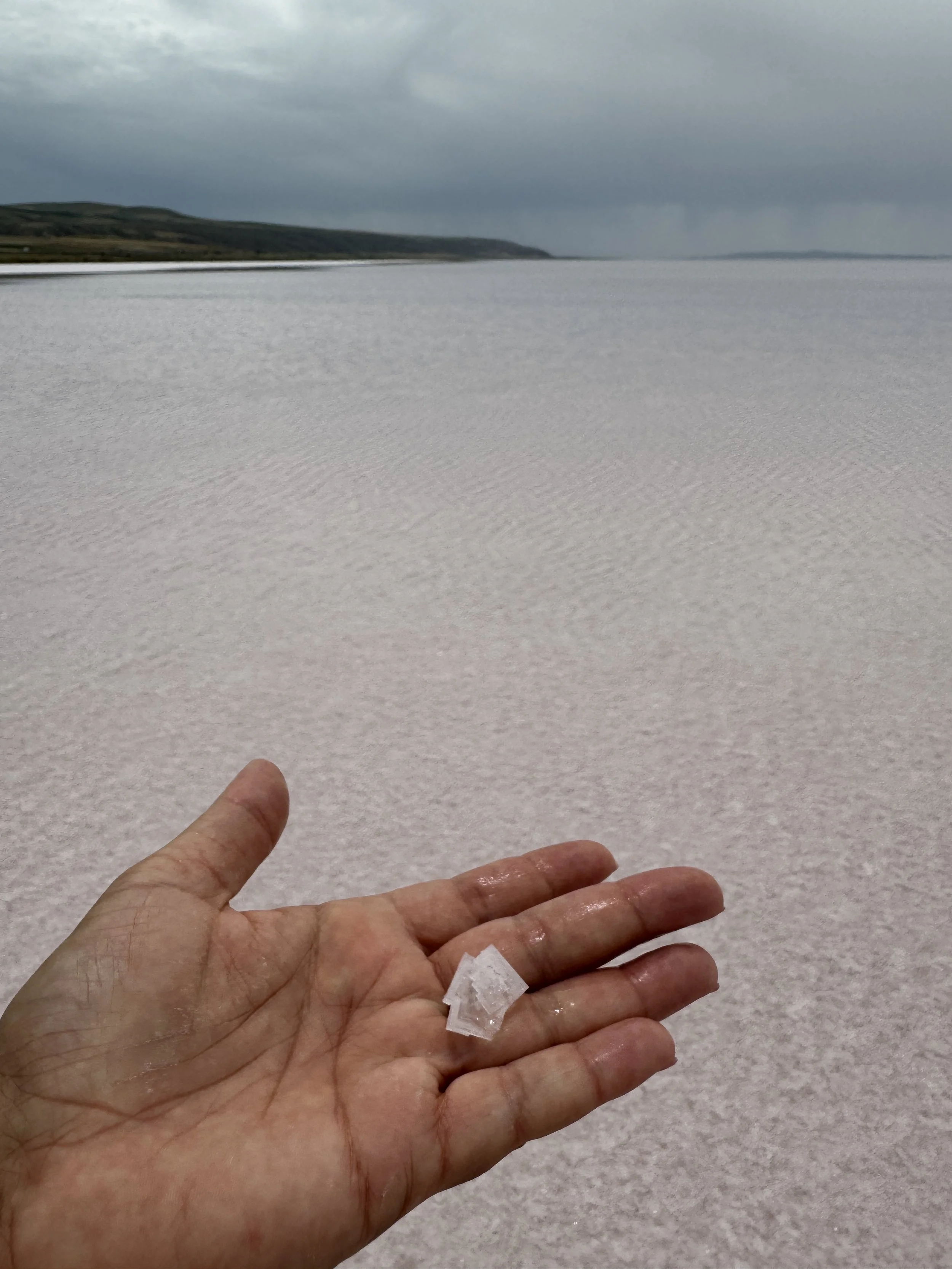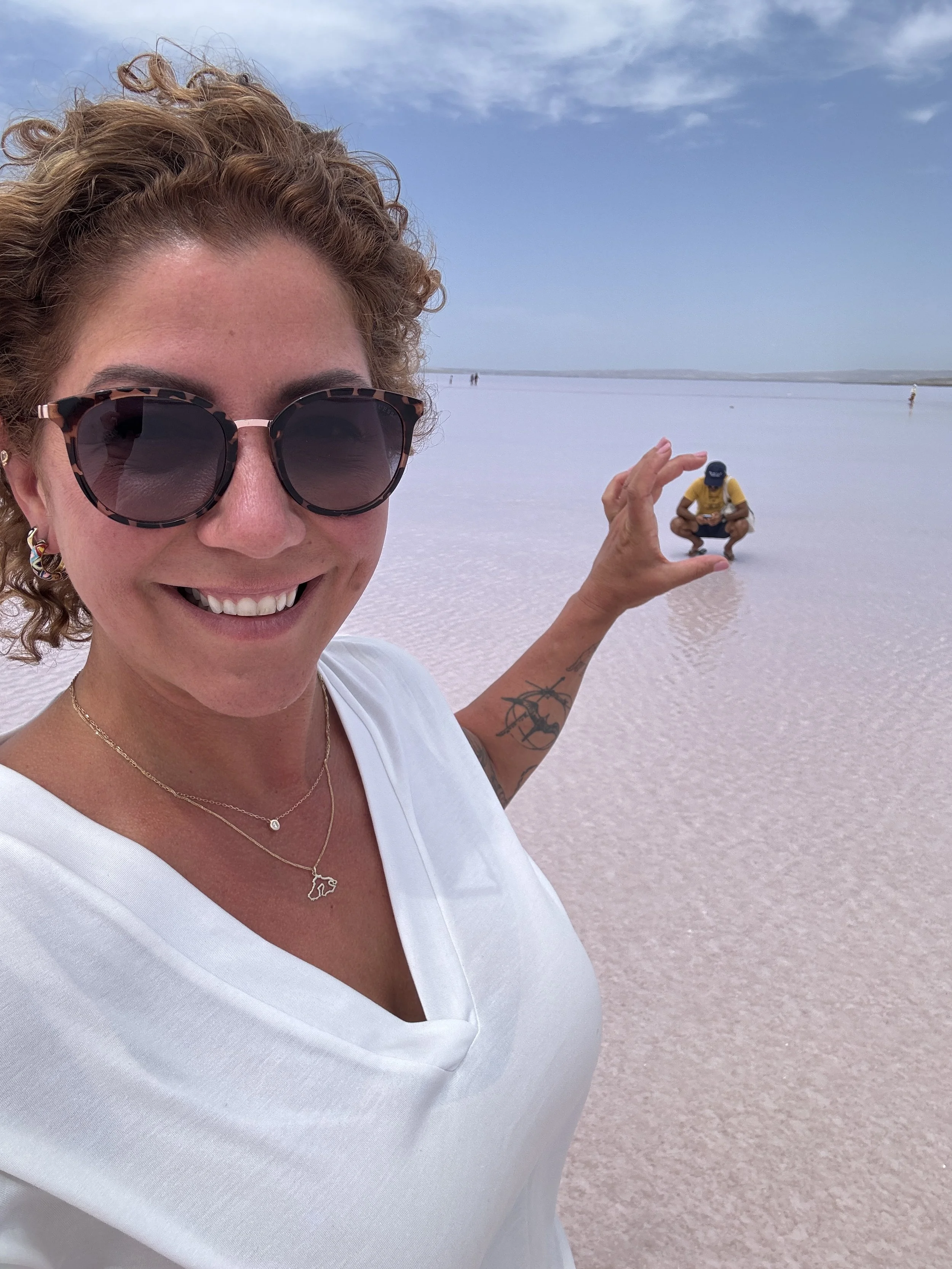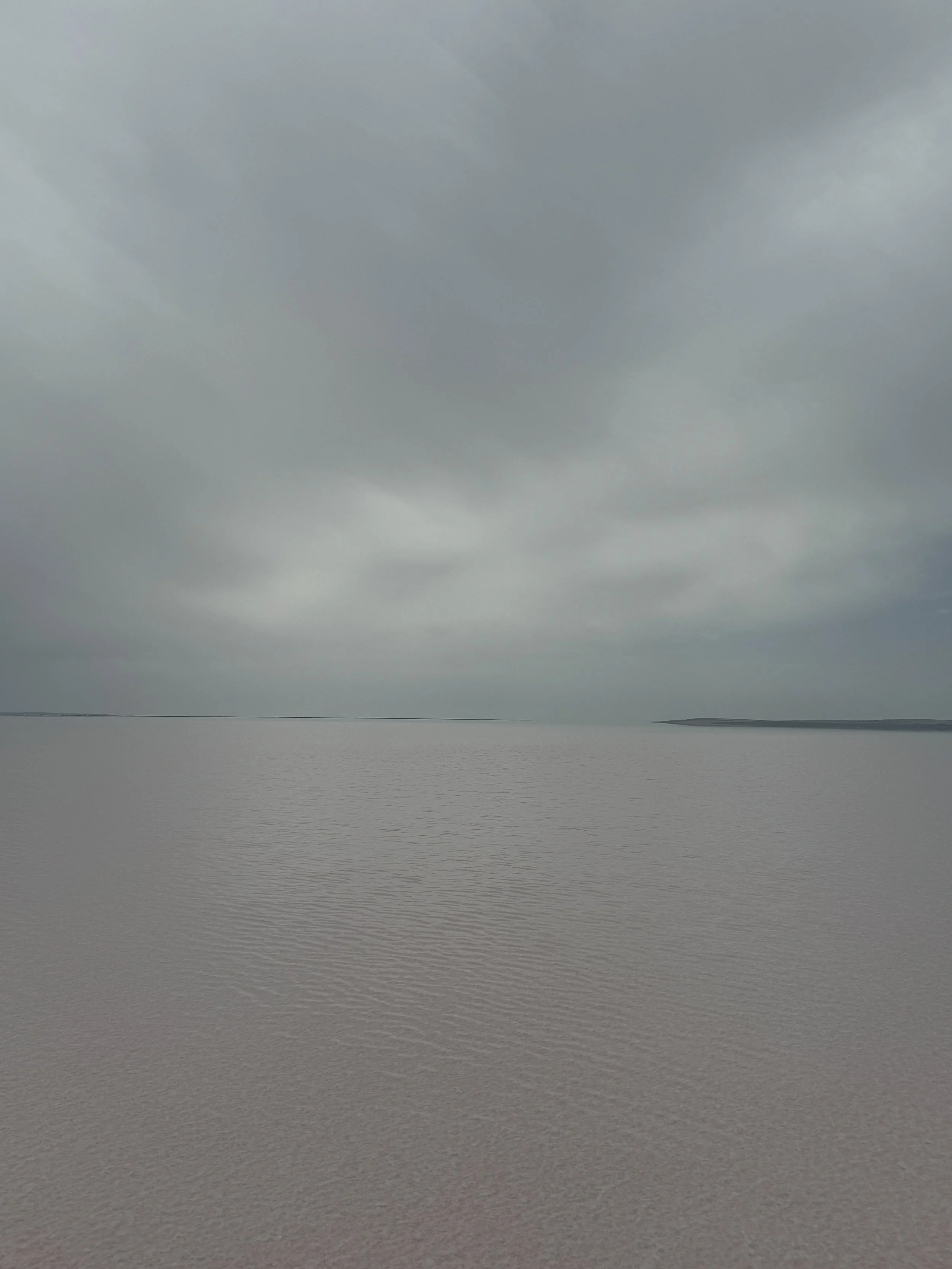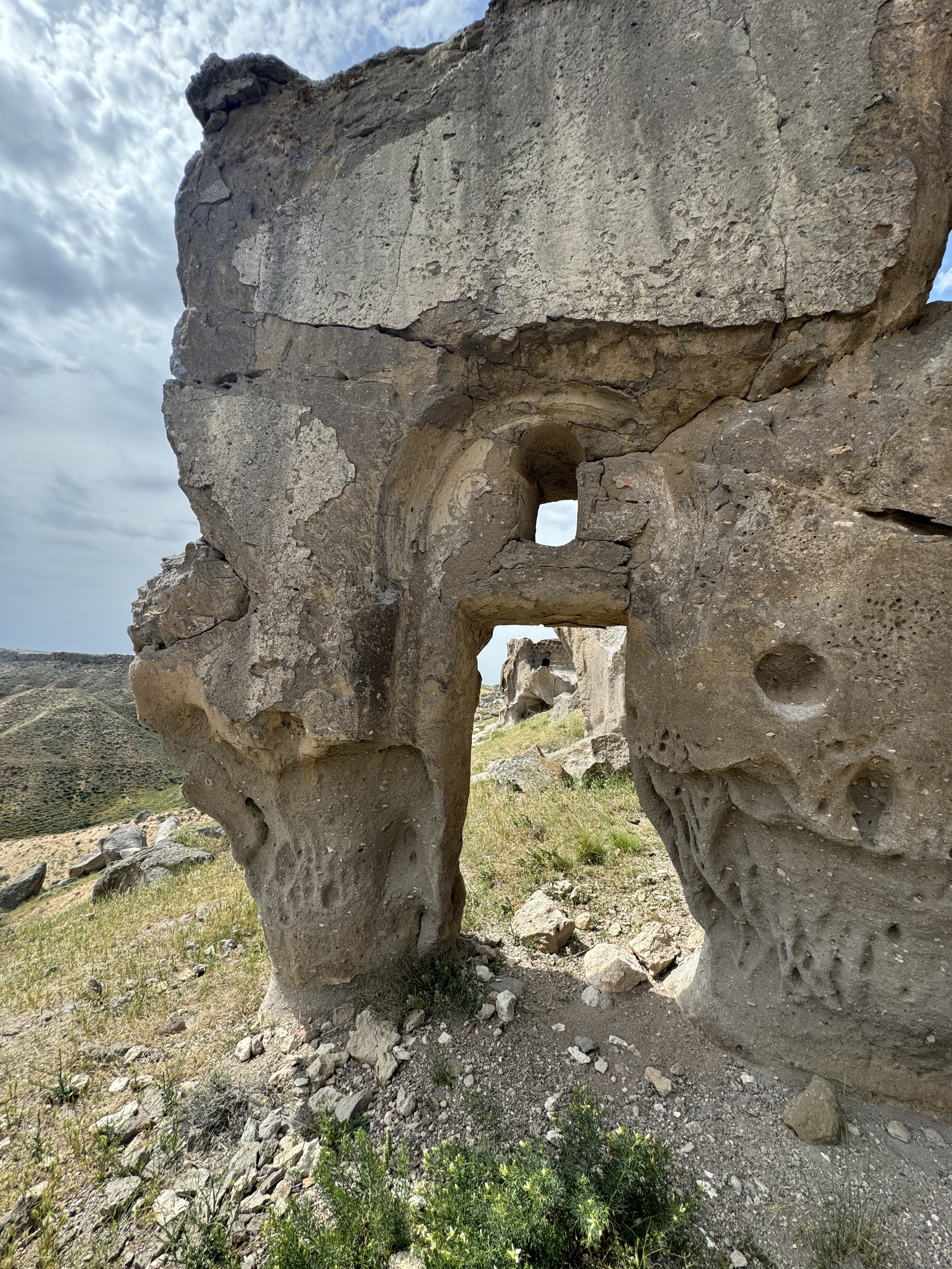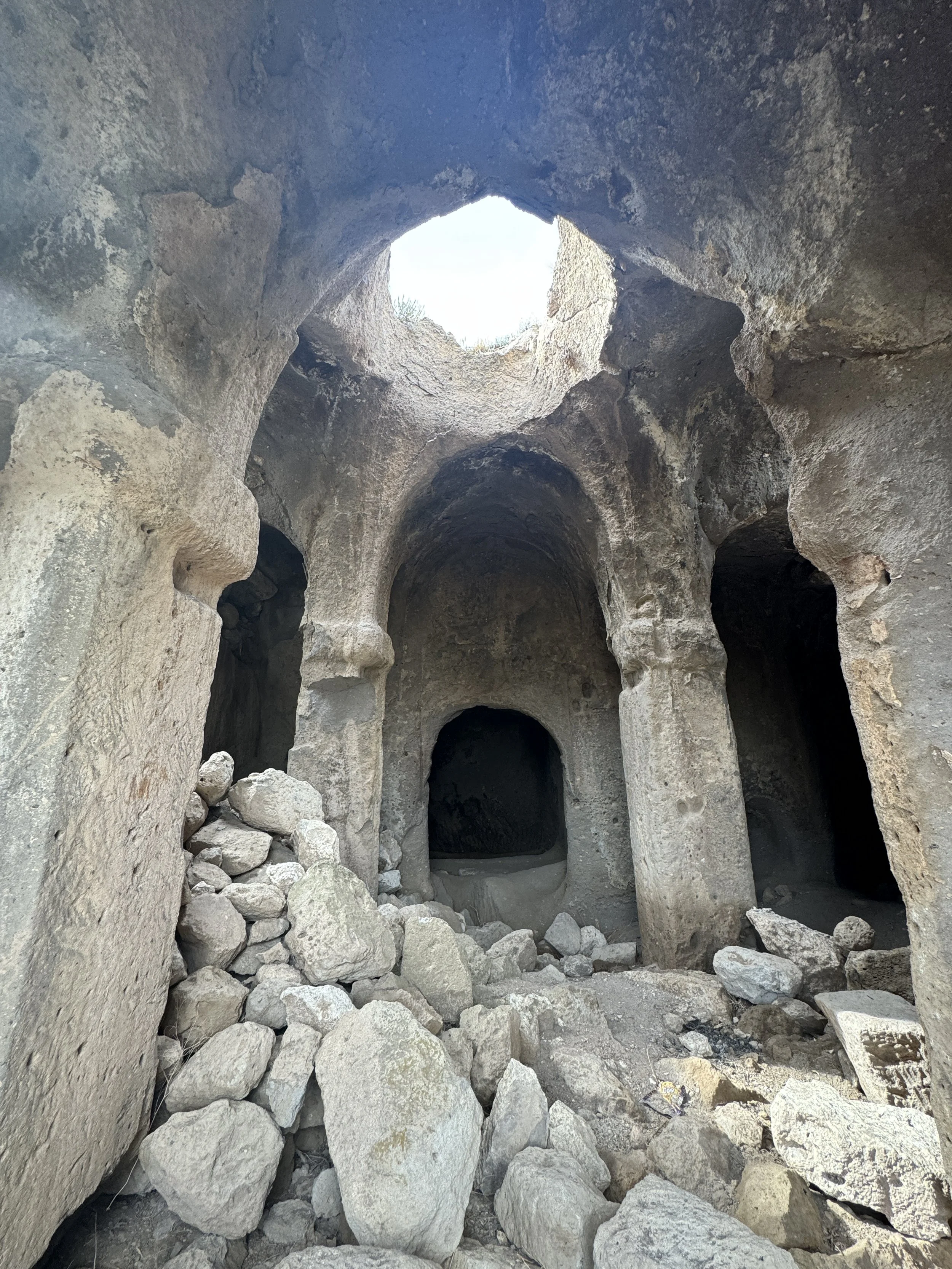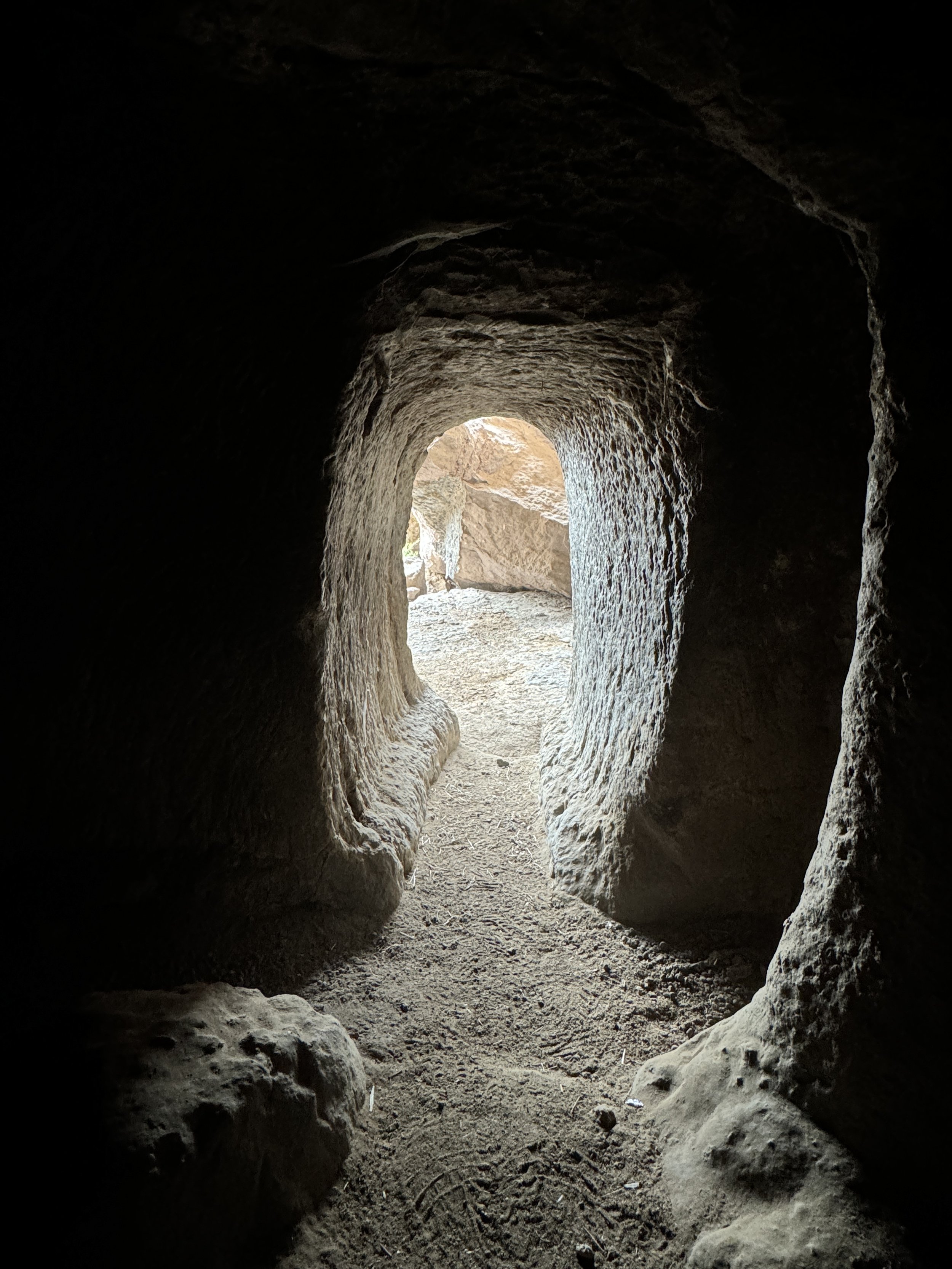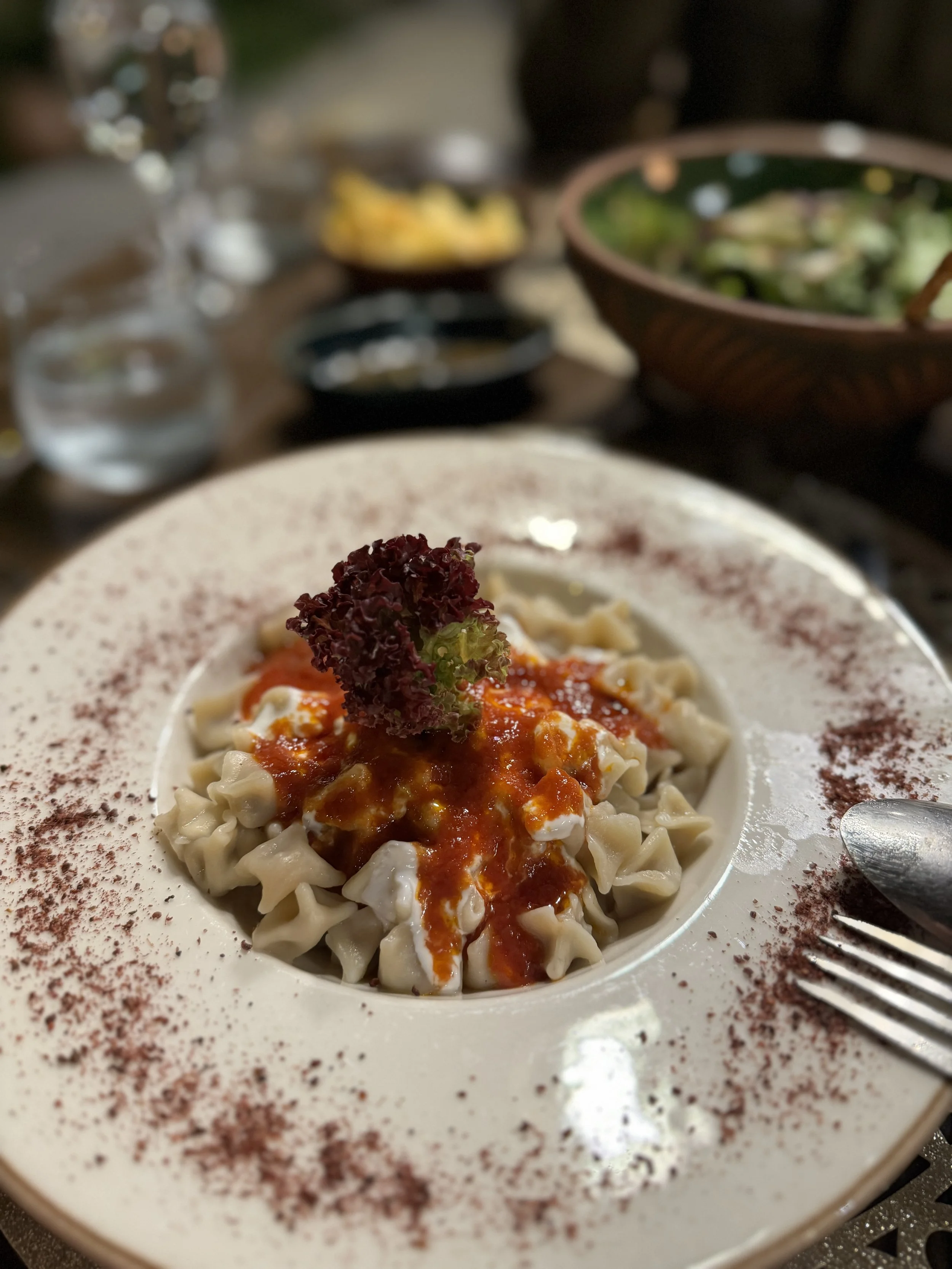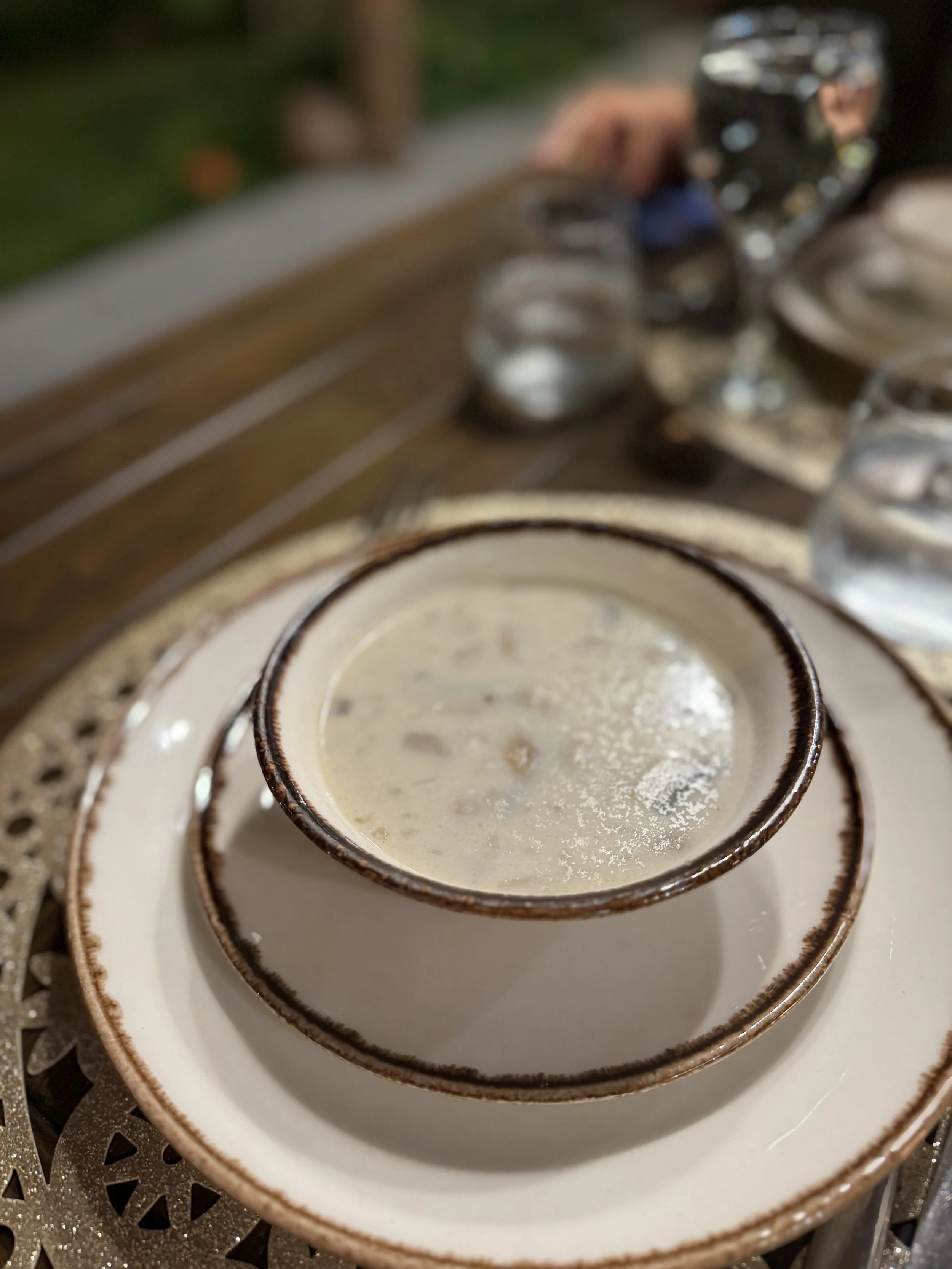Turkiye - Day 2: Ankara to Cappadocia
Aksaray, Turkiye - All photos © Rose Cameron 2024 Unauthorized use, reproduction, or distribution is prohibited. This post may contain affiliate links. More Info Here
"Travel makes one modest. You see what a tiny place you occupy in the world." – Gustave Flaubert
We woke up before dawn on Day 2, feeling the house stir with us. Z's family ensured we had a healthy breakfast and çay (tea). Sharing breakfast and starting the day as a family is an inherently Turkish tradition. I grew up in a family that shared most meals together, and I love seeing this reflected in their culture. We were sent off with hugs, kisses, and the many Turkish ways to say goodbye. His mom packed bananas, apples, a few böreks (stuffed pastries or breads), and kuruyemiş (a sort of trail mix) for the drive. We are never sent off from Ankara without bags full of treats!
The city sprawl of Ankara rapidly gives way to wide expanses of hills and farmland. The sky rolls over grassy hills as the city fades from existence. A lone Kangal dog lopes along the highway while semi-trucks lumber past. In the distance, we see a wide, shallow valley. Wild mustard seems to be universal—growing here, in the rolling countryside of France, the flat expanses of the Netherlands, and the hillsides of Greece. We decide to aim for Tuz Gölü, a giant salt lake set in the basin on the way to Cappadocia.
Tuz Gölü
We begin to see a white line on the horizon, shimmering in the midday heat. If you’ve ever been to a salt flat, you know how mirage-like they can be. The water on the salt forms a highly reflective surface, creating a mirror-like effect and hosting unexpected wildlife, including flamingos. The road lazily circles around toward the entrance, and in the distance, tour buses stud the massive parking lot. I’m a little uncertain; Tuz Gölü is just a salt flat, after all. But like most things in this part of the world that aren’t wildly popular, it’s well worth a shot. We park and are pushed through the shopping area, where an array of wares is being sold, ranging from possibly handcrafted items to completely overpriced junk and numerous salt-based products.
We pass through the exit and walk toward the salt flats, where a few Instagrammable photo-ops are set up overlooking the lake. What had been an orderly path spills us directly onto the salt. The salt underfoot is sudden and sharp. We bend down to scrape up handfuls and find ourselves holding stacked crystals. Square-shaped, cubes, pattern upon repeating pattern. They’re mesmerizingly perfect, a marvel of nature, math, and art. We find ourselves slowing down as we walk farther out. There’s something about the size of the lake that absorbs sound and time. It’s quieter than I’d imagined—easy, warm, soothing. It’s like being held in a bath, and I want to take everything off and float. The farther out we walk, the deeper our sense of peace becomes. We both agree, even with thunder threatening on the distant horizon, we could stay here for a long time.
Lunch
We headed back to the car, our legs crusted in salt (pants too), and dusted ourselves off after buying a few things as a ‘thank you’ to the shops lining the front. Hungry, we found a fantastic pide place on Google Maps by pure luck! Saltanat Pide Solonu may not look like much on the outside, but it was delicious! If you're not familiar with pide, it’s similar to pizza but stretched into a long, thin oval and cooked in a wood-fired oven. The crust forms a ‘boat’ shape, cradling fillings of meats, cheeses, sauce, and vegetables. It’s often served with lettuce, tomato, lemon wedges, parsley, and pul biber (pepper). The dough is always made from scratch, and in much of Turkey, the cheese is extremely local.
Onward
Refreshed, we head onwards and outwards, with our next destination chosen on a whim. When you look at Cappadocia, Nevşehir, and Göreme, it’s easy to feel overwhelmed by the multitude of places to see. Underground cities, cave homes, tours—it’s physically impossible to be in so many places at once! When faced with decisions, whether in life or travel, I’ve found it’s better to simply start making choices than to do nothing at all. Paralysis by analysis is a demon I don’t entertain. I’d rather pick a 4/5 star activity than drive around earning 0/5 stars in adventure for the day! Something about the remote location and high reviews led me to point us toward Aksaray.
Soon, we find ourselves on a beat-up road, sheep being herded past our rental car. We stop and let them amble by in the afternoon heat. They’ve been walking this path long before it was a road and likely will long after we’re gone. We wind our way upwards, then turn a corner and are taken aback by the view. Pretty yields to breathtaking. We exit the car and are immediately attacked by heat, bugs, and wind. Behind us, we are surrounded by the yawning mouths of cave homes, carved stone, and pigeon holes. There’s no one here, and it smells of sheep.
We spend the next few hours climbing in and out, up and down, walking trails more frequently trod by animals than men. Frescoes adorn the walls in various states of decay. We trace our fingers over the textured walls, wondering how and why they carved them this way or that. What was the pigment made from, and how has it lasted all these years? Did they texture the walls so the plaster would adhere better? What did they grind up to make this shade of blue or that bright red?
We explore deep inside some of the better-preserved homes. We find massive boulders carved into discs, five feet across with a small hole in the center. They’re heavy ‘doors’ that roll across stone-carved hallways and fit into slots carved into the sidewalls. Did the family hide in here from attackers? Did they stash treasures for safekeeping? What were they so afraid of? What did they yearn for? The sheer physical feat of carving this stone is inspiring—but the added art, the addition of what wasn’t necessary, is captivating.
We continue walking and find ourselves in the decomposing structure of Çanlı Kilise church. Çanlı Kilise dates primarily from the 10th and 11th centuries and is known as the Living Church or the Bell Church. It’s a rare masonry church from that time, and its remaining structure towers above us, birds nesting in its broken arches and dancing in the blue sky in the open air. They chirp incessantly, oblivious to our trip back in time. They land and squawk, talons chipping off 1,000-year-old frescoes into the dirt below. They tell me, "You were nothing. You are nothing. You will be nothing." Pigeons putting me in my place—what a day.
To Ürgüp!
We left the ruins of Aksaray in awe and headed directly into a thunderstorm. Fat raindrops pelted the dirty car window as we passed from the empty landscape through the tourist area of Nevşehir. Along the way, we stopped to take in breathtaking sights. Groups of ATV tours, Land Rover tours, and girls clad in clothes better suited for Instagram-perfect days than torrential desert downpours were parked at semi-regular intervals. We ducked into a parking lot, going nowhere as the sky above us cracked with lightning and the clouds dumped their contents onto us. Tourists fled from ATVs to seek shelter while we waited in the car, hoping the storm would pass. A lady walked a camel past, and I noticed a ray of sunlight over the canyon. I tore out of the rental car, gambling that there might be a rainbow. If there was one stretching over the carved pillars and caves of Pigeon Valley, it would be worth getting wet! I ran up to the newly abandoned photo props at the overlook—a festive heart swing with flowers attached—and there it was: a massive rainbow stretching across the wide-open sky.
Hotel + Dinner
We chose the Serinn House for our stay in Cappadocia because it was outside the main tourist area, offered Wi-Fi, breakfast, free parking, and had great reviews. I wanted quiet luxury at a reasonable price and was extremely pleased with our choice! The hotel is tucked behind a few restaurants in a quieter area of Ürgüp, among a handful of other high-end hotels. We entered through a beautiful teal door and found ourselves in a garden courtyard. The owner met us upon arrival and helped us settle into our first-floor cave room. The room was well-appointed and cozy, with plenty of space to work, relax, and settle in for a few days. The owner directed us to Mihre Restaurant Kapadokya at Zeydem Suites.
Dinner was a pleasant surprise! The offerings were all made on-site from local ingredients, and the menu leaned towards a modern, chef-inspired interpretation of classic regional dishes. We enjoyed handmade mantı, a creamy yogurt and mushroom çorba, and a stew cooked in a clay pot bathed in fire and cracked open table-side. Cappadocia has a long history of viticulture, with evidence of winemaking dating back to the Hittite civilization around 2000 BCE. The region’s winemaking traditions continued through the Roman, Byzantine, and Ottoman periods. If you’re a wine lover, don’t hesitate to try a glass or take a tour!
Summary
Today, we’ve rewound the hourglass of time significantly. We stood in homes carved during the Hittite period 3,500 years ago, which were further refined over centuries, with churches added a thousand years ago right beside them. We could trace layers of humans who thought they knew best, believing they were the chosen ones. Nature mocks us with its heat, wind, mosquitoes, and pigeons, reminding us that we, and our structures, are temporary. We are at the end of the diving board, about to launch ourselves into weeks of history that reach as far back as 13,000 years. Reflecting on the mere forty-three years of my life, it seems like nothing. Who am I in all this dust and time? How important are my struggles? How common are all of our worries? As we drift to sleep in the dark quiet of our cave-room, I cannot fathom what tomorrow holds.




